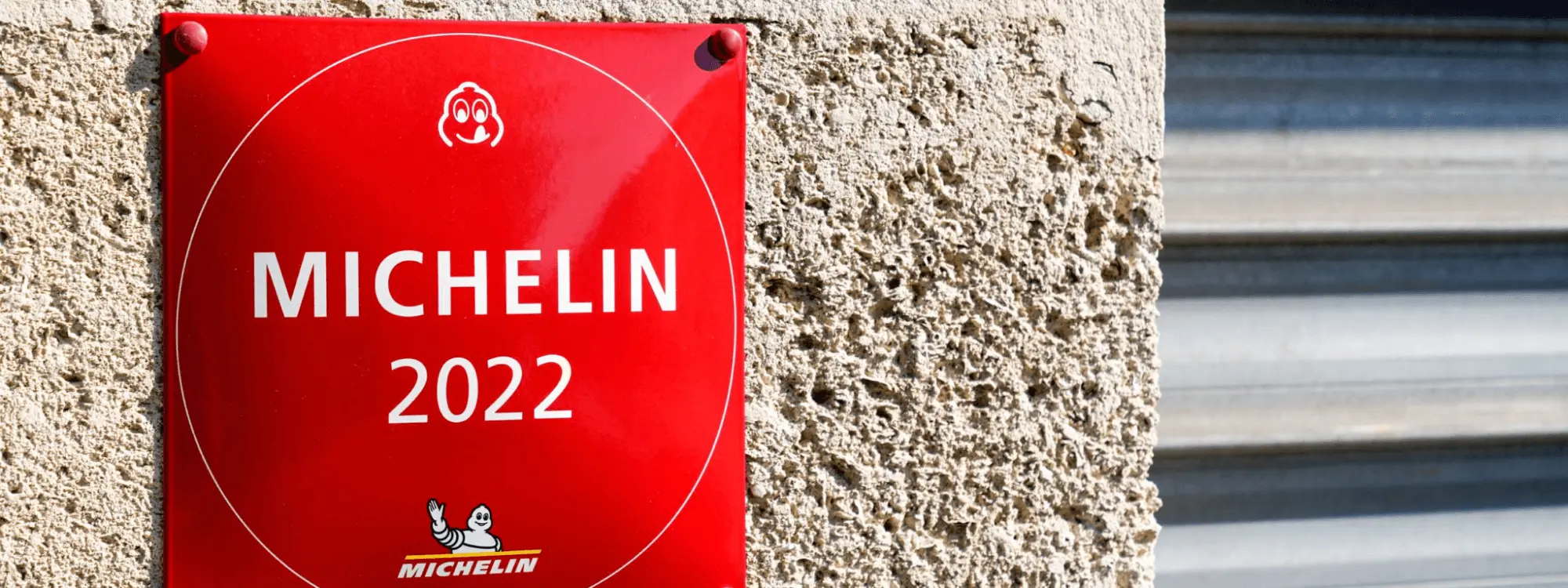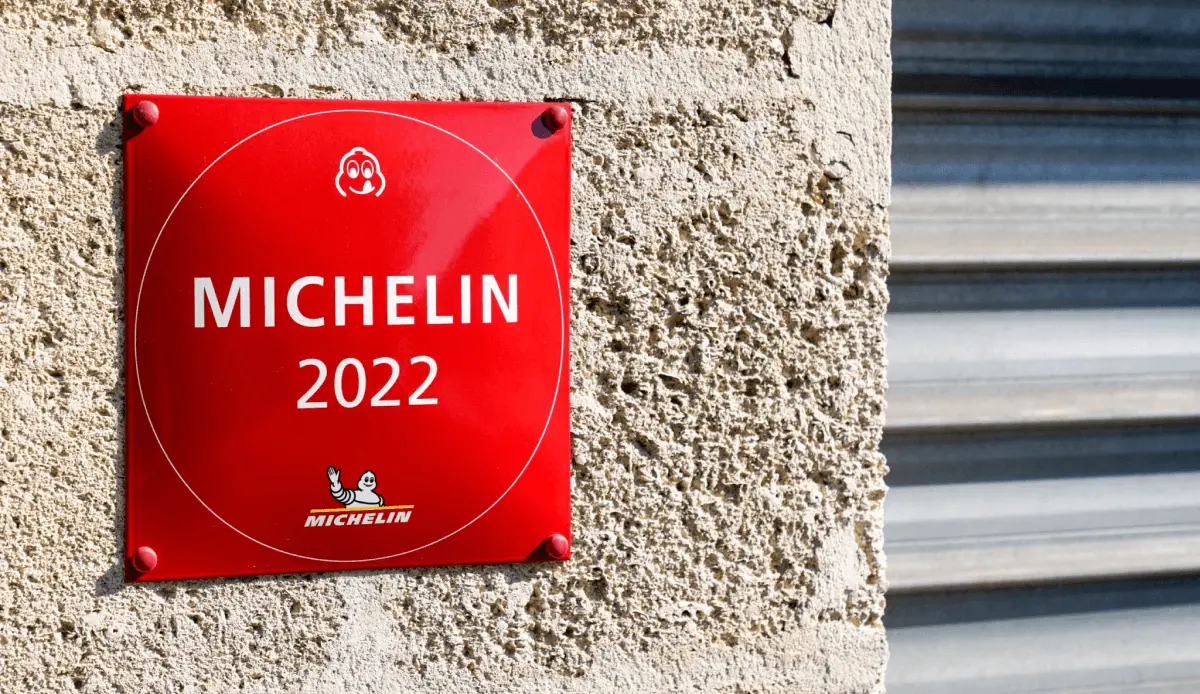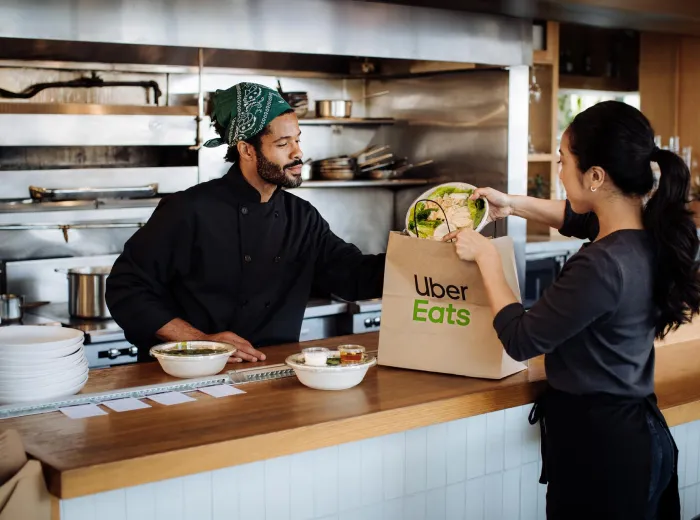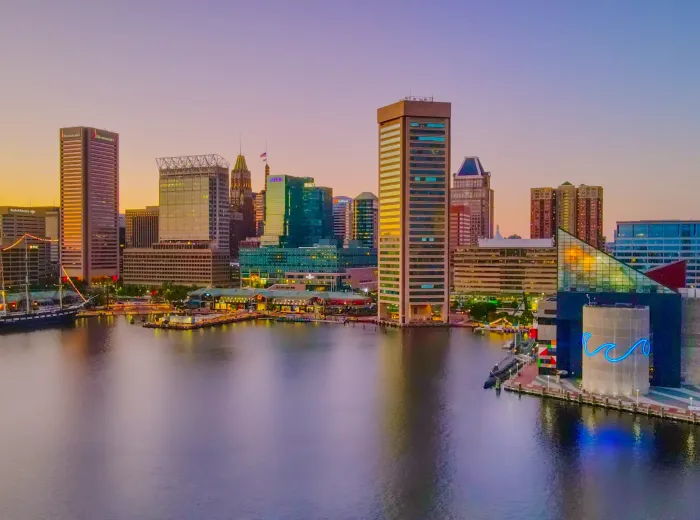

What Is a Michelin Star? And How to Earn One?
In the culinary world, few accolades carry as much prestige as a Michelin Star. These coveted awards are not just a testament to exceptional cooking but also a symbol of culinary excellence recognized globally. For chefs and restaurateurs, earning a Michelin Star is often seen as the pinnacle of their career, a validation of years of dedication, creativity, and hard work. But what exactly is a Michelin Star, and why does it hold such weight in the industry?
A Michelin Star isn’t just an award; it’s a powerful brand marker that can elevate a restaurant’s reputation, draw in gastronomes from around the world, and significantly impact a business’s bottom line. The process of earning a Michelin Star is shrouded in mystery, with many chefs and restaurant owners wondering what it takes to get noticed by the Michelin inspectors. In this comprehensive guide, we’ll unravel the history and significance of Michelin Stars, explore the stringent criteria that inspectors use to evaluate restaurants, and provide actionable insights on how your establishment can aspire to earn one of these prestigious accolades.
Whether you’re a seasoned restaurateur aiming for the stars or an aspiring chef dreaming of culinary greatness, understanding the ins and outs of Michelin Stars is crucial. This guide will take you through everything you need to know—from the origins of the Michelin Star system to the practical steps you can take to get on the radar of the Michelin Guide.
Now, let’s dive into the world of Michelin Stars and discover what it takes to achieve this remarkable honor.
Would you like to listen our deep-dive conversation about this article?
Understanding Michelin Stars
Michelin Stars have become a benchmark of quality in the restaurant industry, symbolizing excellence in cuisine and service. However, the history, significance, and criteria behind these awards are not always well understood. This section will delve into the origins and evolution of Michelin Stars, providing a foundational understanding of what they represent and why they are so revered in the culinary world.
What Is a Michelin Star? Definition and History
Origin: The Michelin Star system was created by the Michelin tire company in 1926 as a way to encourage motorists to travel more and, consequently, use more tires.
Evolution:
- Initially, the guide awarded a single star to notable dining establishments.
- In 1931, the system expanded to include two and three-star ratings, setting a new standard for excellence.
Definition: A Michelin Star is awarded to restaurants judged to be of a very high standard by anonymous Michelin inspectors.
- 1 Star: A very good restaurant in its category.
- 2 Stars: Excellent cooking, worth a detour.
- 3 Stars: Exceptional cuisine, worth a special journey.
The Evolution of Michelin Stars Over Time
Global Expansion: Initially focused on Europe, the Michelin Guide has expanded to cover major cities across Asia, the Americas, and beyond.
Changing Criteria:
- Post-War Era: Focused heavily on French haute cuisine.
- Modern Era: Broader inclusion of diverse cuisines and dining experiences, including street food and casual dining.
Technology’s Role: The digital age has transformed how the Michelin Guide is accessed, with apps and online platforms making it more accessible to a global audience.
Why Michelin Stars Matter in the Culinary World
Reputation and Prestige: A Michelin Star elevates a restaurant’s status, signaling to diners that the establishment offers an extraordinary dining experience.
Economic Impact:
- Increased Revenue: Michelin-starred restaurants often see a significant boost in reservations and pricing power.
- Brand Building: The star becomes a powerful marketing tool, attracting tourists and food enthusiasts worldwide.
Career Boost for Chefs: Earning a Michelin Star can catapult a chef’s career, opening doors to new opportunities, partnerships, and global recognition.
Understanding the origins, evolution, and impact of Michelin Stars is the first step toward grasping their significance in the culinary world. With this foundation, we can now explore the criteria and processes involved in earning a Michelin Star in the next section.
The Criteria for Michelin Star Awards
Earning a Michelin Star is no small feat. The process is rigorous, and the criteria are meticulously guarded by Michelin inspectors. While the exact details remain confidential, certain key factors are known to play a crucial role in the decision-making process. This section will explore the various elements that Michelin inspectors evaluate when considering a restaurant for a star, providing insights into what it takes to meet these high standards.
How Michelin Inspectors Evaluate Restaurants
Anonymity: Michelin inspectors visit restaurants anonymously, ensuring that they experience the same level of service and quality as any other diner.
Multiple Visits: To ensure consistency, inspectors typically visit a restaurant multiple times before making a decision.
Global Standards: Michelin inspectors use the same evaluation criteria worldwide, ensuring that a star in Tokyo represents the same level of quality as a star in Paris or New York.
Key Factors: Quality, Creativity, and Consistency
Quality of Ingredients:
- Freshness and sourcing of ingredients play a vital role.
- Emphasis on seasonal and local produce.
Mastery of Techniques:
- Execution of dishes must demonstrate technical prowess.
- Culinary techniques should enhance the flavor and presentation of each dish.
Creativity and Innovation:
- Dishes should offer something unique, whether through innovative combinations or creative presentations.
- Balance between traditional and modern elements is often appreciated.
Consistency:
- Quality must be consistent across all dishes served.
- Diners should have the same exceptional experience every time they visit.
The Role of Ambiance and Service in Michelin Ratings
Ambiance:
- The restaurant’s atmosphere should complement the dining experience.
- Attention to detail in decor, lighting, and overall ambiance is considered.
Service:
- Service should be attentive, knowledgeable, and professional.
- Staff should have a deep understanding of the menu, ingredients, and preparation methods.
- The balance between formal and approachable service is key.
How Menus Influence Michelin Star Ratings
Menu Design:
- A well-curated menu that reflects the chef’s vision and philosophy is crucial.
- Menu Structure:
- Balance between a la carte options and tasting menus.
- Thoughtful progression of courses, from starters to desserts.
- Dietary Considerations:
- Accommodating various dietary needs without compromising on quality or creativity.
Wine and Beverage Pairings:
- Well-considered wine and beverage pairings that enhance the overall dining experience.
- Attention to both classic and innovative pairings.
Understanding the criteria that Michelin inspectors use to evaluate restaurants is essential for any establishment aiming to earn a star. By focusing on quality, creativity, consistency, ambiance, and service, restaurants can position themselves to meet these exacting standards and potentially earn one of these prestigious awards.
How to Earn a Michelin Star?
Earning a Michelin Star is a dream for many chefs and restaurateurs, but it requires more than just passion and hard work. It demands a strategic approach, a commitment to excellence, and an understanding of what Michelin inspectors are looking for. This section will guide you through the practical steps you can take to increase your chances of earning a Michelin Star, from crafting a world-class menu to training your staff and maintaining consistency.
The Journey to Achieving a Michelin Star
Set Clear Goals:
- Define your vision for the restaurant and align your team with these goals.
- Identify what makes your restaurant unique and how it stands out from the competition.
Research and Planning:
- Study Michelin-starred restaurants to understand what they do differently.
- Develop a detailed business plan that focuses on quality, innovation, and customer experience.
Location and Timing:
- Choose a location that can attract food enthusiasts and potentially Michelin inspectors.
- Timing is key; ensure your restaurant is fully prepared before attempting to attract Michelin’s attention.
Building a Michelin-Worthy Menu
Culinary Innovation:
- Experiment with flavors, techniques, and presentations to create a menu that excites and surprises diners.
- Focus on signature dishes that can become iconic representations of your restaurant.
Ingredient Sourcing:
- Prioritize high-quality, seasonal ingredients that reflect your culinary philosophy.
- Build relationships with local farmers, fishermen, and suppliers to ensure the freshest produce.
Menu Consistency:
- Ensure that every dish on the menu meets the highest standards, from starters to desserts.
- Regularly review and refine the menu based on customer feedback and culinary trends.
Training Your Team for Michelin-Level Service
Hiring the Right Staff:
- Recruit experienced professionals who share your commitment to excellence.
- Focus on a balance of skill, passion, and the ability to work well under pressure.
Comprehensive Training:
- Provide ongoing training to ensure that all staff members are knowledgeable about the menu and ingredients.
- Emphasize the importance of consistency, attention to detail, and superior customer service.
Creating a Collaborative Culture:
- Foster a team environment where everyone is invested in the restaurant’s success.
- Encourage creativity and innovation in the kitchen and service areas.
The Importance of Consistency in the Michelin Process
Consistency Across All Aspects:
- Ensure that the quality of food, service, and ambiance is consistent every day, for every customer.
- Regularly monitor and maintain standards to avoid any lapses in quality.
Quality Control Systems:
- Implement strict quality control processes, including regular tastings and service reviews.
- Use customer feedback as a tool for continuous improvement.
Case Studies: Restaurants That Earned Their First Star
Case Study 1: Restaurant A:
- Strategy: Focused on a seasonal tasting menu with locally sourced ingredients.
- Outcome: Earned their first Michelin Star within two years of opening.
Case Study 2: Restaurant B:
- Strategy: Innovated with a fusion of traditional and modern cooking techniques.
- Outcome: Achieved a Michelin Star after gaining a reputation for its creative approach.
Case Study 3: Restaurant C:
- Strategy: Prioritized exceptional customer service alongside a meticulously crafted menu.
- Outcome: Received a Michelin Star following consistent positive reviews and word of mouth.
Earning a Michelin Star is a complex and challenging process, but with the right strategies, dedication, and attention to detail, it’s an achievable goal. By focusing on innovation, consistency, and a well-trained team, your restaurant can create the kind of extraordinary dining experience that catches the attention of Michelin inspectors.
The Impact of Earning a Michelin Star
Achieving a Michelin Star is more than just a recognition of culinary excellence; it has far-reaching implications for a restaurant’s reputation, finances, and overall business strategy. The impact of a Michelin Star can transform a restaurant’s fortunes, but it also brings new challenges and pressures. In this section, we’ll explore the multifaceted effects of earning a Michelin Star, from financial gains to the demands of maintaining such a prestigious accolade.
How a Michelin Star Can Transform Your Business
Earning a Michelin Star can significantly boost your restaurant’s visibility and prestige, attracting a broader and more discerning clientele.
Increased Reservations:
- Michelin Stars drive higher demand, often leading to fully booked tables weeks or months in advance.
- This increased demand can allow for strategic pricing adjustments.
Brand Recognition:
- A Michelin Star instantly elevates your restaurant’s brand, placing it among the elite in the culinary world.
- This recognition can open doors to partnerships, media opportunities, and brand extensions.
Global Attention:
- Attracts international tourists and food enthusiasts who travel specifically for Michelin-starred experiences.
- Enhances your restaurant’s profile on a global stage.
Financial Benefits of a Michelin Star
A Michelin Star can lead to significant financial rewards, from increased revenue to more strategic business opportunities.
Revenue Growth:
- Michelin-starred restaurants often see a substantial increase in revenue due to higher customer turnout and the ability to charge premium prices.
- The star can also lead to additional revenue streams such as cookbooks, branded products, and consulting opportunities.
Investment Opportunities:
- Attracts potential investors interested in expanding your brand or opening new locations.
- Enhanced credibility with financial institutions, making it easier to secure loans or funding for expansion.
The Marketing Power of a Michelin Star
A Michelin Star is a powerful marketing tool that can be leveraged to build your restaurant’s reputation and attract more customers.
Enhanced Advertising:
- The Michelin Star can be prominently featured in marketing materials, social media, and advertisements, making your restaurant more appealing to potential diners.
- Leverage the star in PR campaigns and media appearances to maximize exposure.
Social Media Buzz:
- Creates a significant buzz on social media platforms, with diners eager to share their experiences at a Michelin-starred restaurant.
- Positive reviews and user-generated content can further enhance your restaurant’s online presence.
Challenges and Pressures of Maintaining a Michelin Star
While the benefits of a Michelin Star are numerous, it also brings a set of challenges that can put pressure on your team and operations.
High Expectations:
- Consistently meeting the elevated expectations of Michelin-starred dining can be challenging, requiring constant innovation and attention to detail.
- There is a continuous need to maintain and even exceed the standards that earned the star.
Operational Stress:
- The increased demand can strain your kitchen and service staff, leading to potential burnout if not managed carefully.
- Maintaining quality while scaling operations or expanding can be difficult.
Risk of Losing the Star:
- The pressure to retain a Michelin Star can be immense, as losing it can negatively impact your restaurant’s reputation and revenue.
- Regular assessment and improvement are necessary to avoid complacency.
Earning a Michelin Star can propel your restaurant to new heights, but it also comes with its own set of challenges. By understanding and preparing for the impact of a Michelin Star, you can maximize the benefits while managing the pressures that come with this prestigious accolade.
Misconceptions and Myths About Michelin Stars
Michelin Stars are surrounded by an air of mystery and prestige, which often leads to misconceptions and myths about what they represent and how they are awarded. These misunderstandings can create unrealistic expectations or discourage deserving restaurants from pursuing a Michelin Star. In this section, we’ll debunk some of the most common myths and clarify the realities behind the Michelin Star system.
Common Misunderstandings About Michelin Ratings
Many people believe that Michelin Stars are only awarded to the most luxurious and expensive restaurants, but this is far from the truth.
Myth: Only fine dining restaurants can earn Michelin Stars.
Reality: Michelin Stars are awarded to a wide range of dining establishments, from casual eateries to luxurious fine dining venues, as long as they meet the criteria for quality and consistency.
Myth: Michelin inspectors only focus on the food.
Reality: While the quality of the food is paramount, inspectors also consider service, ambiance, and overall dining experience.
Myth: Michelin Stars are permanent.
Reality: Michelin Stars are not lifetime awards; they must be earned and maintained every year. A restaurant can lose its star if it fails to meet the standards in subsequent inspections.
The Myth of the Michelin Guide’s European Bias
There is a common belief that the Michelin Guide favors European restaurants, particularly those in France.
Myth: Michelin Stars are biased toward European, especially French, cuisine.
Reality: While the Michelin Guide originated in France and has a long history there, it has expanded globally and now recognizes excellence in a variety of cuisines, from Japanese to Peruvian.
Myth: It’s easier for European restaurants to earn Michelin Stars.
Reality: Michelin uses the same rigorous criteria worldwide, and stars are awarded based on quality, not geography. Many non-European restaurants have earned stars and even three-star ratings.
Can Casual Dining Earn a Michelin Star?
There is a misconception that only high-end, formal dining establishments can earn Michelin Stars.
Myth: Casual dining establishments cannot earn Michelin Stars.
Reality: Casual dining spots, including street food vendors, have been awarded Michelin Stars in recent years, particularly in cities like Bangkok and Singapore. The key is exceptional food, not the formality of the setting.
Myth: Ambiance is more important than food in earning a star.
Reality: While ambiance is considered, the quality and consistency of the food remain the most critical factors in earning a Michelin Star.
Understanding the truth behind these common misconceptions can help you better navigate the Michelin Star landscape and set realistic goals for your restaurant. By focusing on what truly matters—quality, consistency, and a unique dining experience—you can increase your chances of being recognized by the Michelin Guide, regardless of your restaurant’s style or location.
The Future of Michelin Stars
As the culinary world continues to evolve, so too does the Michelin Star system. The future of Michelin Stars will be shaped by changing dining trends, a growing emphasis on sustainability, and the ongoing expansion of the Michelin Guide to new regions and cuisines. This section will explore how these factors are influencing the Michelin Star system and what they mean for aspiring restaurants.
How the Michelin Guide Is Adapting to Modern Dining Trends
The Michelin Guide is increasingly recognizing diverse culinary styles and more casual dining experiences in response to evolving consumer preferences.
Inclusion of Casual Dining:
- Michelin is now awarding stars to casual dining establishments, reflecting a shift in dining culture where excellence is no longer confined to formal settings.
- Examples include street food vendors and bistros that deliver exceptional culinary experiences without the formality of traditional fine dining.
Embracing Global Cuisines:
- The guide is broadening its scope to include a wider variety of cuisines, showcasing culinary excellence from regions and cultures previously underrepresented.
- This shift highlights a growing appreciation for authenticity and diversity in the culinary world.
The Impact of Sustainability on Michelin Ratings
Sustainability is becoming an increasingly important factor in the Michelin evaluation process, with more attention given to restaurants that prioritize eco-friendly practices.
Green Star Initiative:
- Michelin introduced the Green Star to recognize restaurants that excel in sustainable practices, from sourcing local ingredients to reducing waste.
- This initiative encourages restaurants to adopt environmentally responsible practices without compromising on quality.
Sustainable Sourcing:
- Restaurants that focus on sustainable sourcing of ingredients, such as farm-to-table approaches or support for local farmers, are gaining recognition.
- Sustainability is not just a trend but a critical factor that could influence future Michelin ratings.
The Global Expansion of the Michelin Guide
The Michelin Guide is continually expanding its reach, bringing recognition to culinary talent in new regions and cities around the world.
New Territories:
- The guide is expanding into new countries and cities, including regions in Asia, Africa, and South America, recognizing the burgeoning culinary scenes in these areas.
- This expansion is creating opportunities for more diverse restaurants to earn Michelin Stars.
Digital Evolution:
- The digital transformation of the Michelin Guide is making it more accessible to a global audience, with online platforms and apps allowing users to explore Michelin-rated restaurants worldwide.
- The guide’s digital presence is also fostering greater transparency and engagement with the culinary community.
The future of Michelin Stars is one of inclusivity, sustainability, and global recognition. As the Michelin Guide continues to adapt to the changing culinary landscape, restaurants that embrace these trends and maintain a commitment to excellence will be well-positioned to earn and retain Michelin Stars in the years to come.
Steps to Get on the Michelin Radar
Getting noticed by the Michelin Guide is a significant achievement that requires more than just culinary excellence. It involves strategic efforts to build visibility, cultivate relationships within the industry, and consistently deliver a dining experience that stands out. This section will outline actionable steps you can take to position your restaurant on the Michelin radar and increase your chances of being considered for a Michelin Star.
Networking and Building Industry Relationships
Establishing connections within the culinary world can help put your restaurant on the Michelin inspectors’ radar.
Engage with Influential Figures:
- Build relationships with well-known chefs, food critics, and influencers who can bring attention to your restaurant.
- Attend industry events, food festivals, and culinary conferences to network with key players in the restaurant world.
Collaborations:
- Participate in collaborations with Michelin-starred chefs or host pop-up events to showcase your culinary skills.
- Collaborations can introduce your restaurant to new audiences and generate buzz within the industry.
Leveraging Media and Public Relations
Strategic use of media and PR can significantly enhance your restaurant’s visibility and attract Michelin’s attention.
Media Coverage:
- Aim to get featured in reputable food and lifestyle publications, both online and offline.
- Invite food critics and bloggers to dine at your restaurant and provide honest reviews.
Public Relations Campaigns:
- Develop a PR strategy that highlights your restaurant’s unique offerings and achievements.
- Use press releases to announce new menu launches, special events, or milestones, positioning your restaurant as newsworthy.
Participating in Culinary Competitions and Events
Taking part in recognized culinary competitions and events can help showcase your talents and elevate your restaurant’s profile.
Culinary Awards:
- Compete in prestigious culinary awards and contests, which can enhance your reputation and demonstrate your expertise.
- Winning or even being nominated for awards can draw the attention of Michelin inspectors.
Food Festivals and Pop-Ups:
- Participate in food festivals or host pop-up events in different cities to broaden your restaurant’s reach.
- These events can help you showcase your culinary style to a wider audience, including industry insiders.
Enhancing Online Presence and Reviews
A strong online presence is crucial for attracting the attention of both customers and Michelin inspectors.
Optimizing Online Listings:
- Ensure your restaurant’s profiles on platforms like Google, Yelp, and TripAdvisor are complete and up-to-date.
- Highlight your best dishes, unique aspects of your dining experience, and customer testimonials.
Encouraging Positive Reviews:
- Encourage satisfied customers to leave positive reviews, which can boost your restaurant’s reputation online.
- Respond to reviews professionally and use feedback to continuously improve the dining experience.
By strategically networking, leveraging media, participating in culinary events, and maintaining a strong online presence, you can increase your chances of being noticed by Michelin inspectors. These steps not only enhance your visibility but also demonstrate your commitment to excellence—an essential factor in earning a Michelin Star.
Frequently Asked Questions About Michelin Stars
The Michelin Star system, while prestigious, can be quite complex and often leaves chefs and restaurant owners with numerous questions. Understanding how the system works, what it takes to maintain a star, and the implications of earning one can help demystify the process. In this section, we’ll address some of the most frequently asked questions about Michelin Stars to provide clarity on these important topics.
How Often Are Michelin Stars Reviewed?
Michelin Stars are reviewed annually, ensuring that restaurants consistently meet the high standards required for this prestigious accolade.
Annual Inspections:
- Michelin inspectors visit starred restaurants each year to ensure they maintain the quality that earned them their star(s).
- If a restaurant’s standards slip, it risks losing its star during the review process.
Can Michelin Stars Be Revoked?
Yes, Michelin Stars can be revoked if a restaurant fails to maintain the quality, consistency, and overall dining experience that initially earned it the star.
Reasons for Revocation:
- A significant drop in food quality, service, or ambiance.
- Major changes in the kitchen staff, particularly if a head chef leaves, which could impact the restaurant’s ability to deliver a consistent experience.
Impact:
Losing a Michelin Star can have a significant impact on a restaurant’s reputation and business, often leading to a decrease in customer interest.
What Happens if a Chef Leaves a Michelin-Starred Restaurant?
When a head chef leaves a Michelin-starred restaurant, it can affect the restaurant’s ability to maintain its star.
Chef Transitions:
- Michelin evaluates the entire dining experience, but the head chef plays a crucial role in the restaurant’s culinary identity.
- If a new chef is brought in, the restaurant must ensure that the quality and consistency remain unchanged to retain its star.
Inspector Re-evaluation:
After a significant change in leadership, Michelin inspectors may conduct additional visits to determine if the restaurant still meets the criteria for a star.
How Do Michelin Stars Differ by Region?
While the Michelin criteria are consistent globally, the culinary culture and expectations can vary by region, influencing how stars are awarded.
Regional Differences:
- In some regions, Michelin may place more emphasis on traditional cooking techniques, while in others, innovation and creativity may carry more weight.
- The availability of local ingredients and regional dining customs can also influence the type of cuisine that is recognized.
Global Standards:
- Despite these differences, a Michelin Star represents the same level of excellence worldwide, ensuring that a star in one region holds the same prestige as a star in another.
Understanding these frequently asked questions about Michelin Stars can help demystify the process and provide a clearer picture of what it takes to earn, maintain, and potentially lose a Michelin Star. This knowledge is crucial for any restaurant aiming to reach the pinnacle of culinary excellence.
ABOUT THE AUTHOR
Erkin Coban
Your Customers Deserve The Best
And we got Menuviel for them.
The fastest and easy-to-use online QR menu with 12+ unique features. Choose Menuviel and elevate your service quality to the next level.
Use free for the first 30 days.

In This Article

Free AI Tools for Restaurants
TRY NOW ➜

Talk to them in their own language
With Menuviel, cater to an international customer base by adding multiple language options to your menus.







